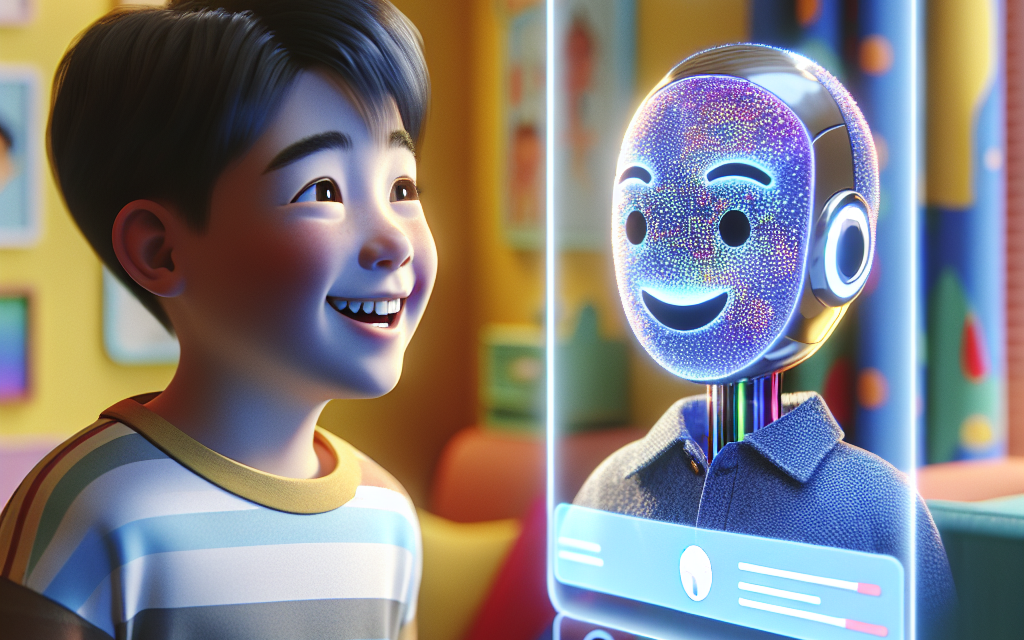Is a Chatbot Capable of Serving as a Child’s Therapist?
The rise of artificial intelligence (AI) has transformed various sectors, including healthcare, education, and mental health. One of the most intriguing applications of AI is the development of chatbots designed to provide therapeutic support. As mental health issues among children and adolescents continue to rise, the question arises: can a chatbot effectively serve as a therapist for children? This article explores this question in depth, examining the capabilities, limitations, and ethical considerations of using chatbots in therapeutic settings for children.
Understanding Chatbots and Their Functionality
Chatbots are AI-driven programs designed to simulate conversation with human users. They can be categorized into two main types: rule-based and AI-based. Rule-based chatbots follow predefined scripts and can only respond to specific inputs, while AI-based chatbots utilize machine learning algorithms to understand and respond to a broader range of queries.
In the context of therapy, chatbots can provide various services, including:
- Emotional Support: Chatbots can offer a listening ear, allowing children to express their feelings in a safe environment.
- Guided Activities: Many chatbots incorporate therapeutic exercises, such as mindfulness practices or cognitive-behavioral techniques.
- Resource Provision: Chatbots can direct users to helpful resources, including articles, videos, and hotlines.
- 24/7 Availability: Unlike human therapists, chatbots are available around the clock, providing immediate support when needed.
- Data Collection: Chatbots can gather data on user interactions, which can be valuable for understanding trends in mental health among children.
Despite these capabilities, the effectiveness of chatbots as therapists for children remains a topic of debate. The following sections will delve into the various aspects of this issue, including the psychological needs of children, the effectiveness of chatbots in therapeutic roles, ethical considerations, and real-world applications.
The Psychological Needs of Children
Understanding the psychological needs of children is crucial when evaluating the potential of chatbots as therapists. Children experience a range of emotional and psychological challenges, including anxiety, depression, and behavioral issues. These challenges can stem from various sources, such as family dynamics, social pressures, and academic stress.
Children often require different therapeutic approaches compared to adults. Key factors include:
- Developmental Stage: Children’s cognitive and emotional development significantly influences their ability to articulate feelings and understand complex concepts.
- Trust and Rapport: Building a trusting relationship with a therapist is essential for effective therapy. Children may be more comfortable opening up to a non-judgmental chatbot.
- Engagement: Children often respond better to interactive and engaging therapeutic methods, which chatbots can provide through games and activities.
- Parental Involvement: Therapy for children often requires parental involvement, which can complicate the chatbot’s role.
- Privacy Concerns: Children may feel more secure discussing sensitive issues with a chatbot, as it offers anonymity.
Research indicates that children are increasingly comfortable with technology, making chatbots a potentially effective medium for therapeutic engagement. A study published in the journal “Computers in Human Behavior” found that children aged 8-12 were more likely to disclose personal information to a chatbot than to a human therapist. This finding suggests that chatbots could serve as a valuable tool in addressing children’s mental health needs.
Effectiveness of Chatbots in Therapeutic Roles
The effectiveness of chatbots as therapeutic tools has been the subject of various studies. While some research indicates promising results, others highlight significant limitations. Key factors influencing the effectiveness of chatbots include:
- Natural Language Processing (NLP): Advanced NLP capabilities allow chatbots to understand and respond to user inputs more effectively, enhancing the therapeutic experience.
- Personalization: Chatbots that can tailor their responses based on user interactions are more likely to engage children effectively.
- Evidence-Based Techniques: Incorporating established therapeutic techniques, such as cognitive-behavioral therapy (CBT), can improve the efficacy of chatbots.
- User Experience: A user-friendly interface and engaging design can significantly impact a child’s willingness to interact with a chatbot.
- Feedback Mechanisms: Chatbots that can adapt based on user feedback are more likely to provide relevant support.
For instance, Woebot, an AI-powered chatbot designed to provide mental health support, has shown promising results in clinical trials. A study published in “The Lancet Digital Health” found that users of Woebot reported a significant reduction in symptoms of anxiety and depression after just two weeks of interaction. This suggests that chatbots can provide effective support for children experiencing mild to moderate mental health issues.
However, it is essential to recognize the limitations of chatbots. They lack the ability to provide nuanced emotional support that a human therapist can offer. Additionally, chatbots may struggle with complex emotional situations, such as trauma or severe mental health disorders. Therefore, while chatbots can serve as a supplementary resource, they should not replace traditional therapy for children with more severe needs.
Ethical Considerations in Using Chatbots for Therapy
The use of chatbots in therapeutic settings raises several ethical considerations that must be addressed. These include:
- Confidentiality: Ensuring the privacy of children’s interactions with chatbots is paramount. Developers must implement robust data protection measures to safeguard sensitive information.
- Informed Consent: Parents or guardians should provide informed consent before children engage with therapeutic chatbots, ensuring they understand the potential risks and benefits.
- Quality of Care: Developers must ensure that chatbots are based on evidence-based practices and regularly updated to reflect the latest research in mental health.
- Accessibility: Chatbots should be designed to be accessible to all children, including those with disabilities or language barriers.
- Dependency Risks: There is a risk that children may become overly reliant on chatbots for emotional support, potentially hindering their ability to seek help from human therapists when needed.
Addressing these ethical considerations is crucial for the responsible development and deployment of chatbots in therapeutic contexts. For example, the developers of Woebot have implemented strict data privacy measures and provide clear information about the chatbot’s capabilities and limitations. This transparency helps build trust with users and their families.
Real-World Applications and Case Studies
Several organizations and initiatives have successfully implemented chatbots as therapeutic tools for children. These real-world applications provide valuable insights into the potential benefits and challenges of using chatbots in mental health support.
One notable example is the “Replika” chatbot, which allows users to create a virtual friend with whom they can share their thoughts and feelings. Replika has been particularly popular among adolescents, providing a safe space for self-expression. A study conducted by the University of Southern California found that users reported feeling less lonely and more supported after interacting with Replika.
Another example is “Wysa,” an AI-driven mental health chatbot designed for young people. Wysa incorporates evidence-based therapeutic techniques and offers a range of activities, such as mood tracking and guided meditations. A pilot study conducted in collaboration with the University of Cambridge found that Wysa users experienced significant reductions in anxiety and depression symptoms over a six-week period.
These case studies highlight the potential of chatbots to provide accessible mental health support for children and adolescents. However, they also underscore the importance of ongoing research and evaluation to ensure that these tools are effective and ethically sound.
Conclusion: The Future of Chatbots in Child Therapy
The question of whether chatbots can serve as effective therapists for children is complex and multifaceted. While chatbots offer several advantages, including accessibility, anonymity, and 24/7 availability, they also have significant limitations. The effectiveness of chatbots in therapeutic roles largely depends on their design, the quality of their interactions, and the specific needs of the child.
As technology continues to evolve, the potential for chatbots to play a supportive role in children’s mental health care is promising. However, it is essential to approach this development with caution, ensuring that ethical considerations are prioritized and that chatbots are used as complementary tools rather than replacements for human therapists.
In summary, chatbots have the potential to provide valuable support for children’s mental health, particularly for those experiencing mild to moderate issues. However, ongoing research, ethical considerations, and a focus on quality care are crucial for ensuring that these tools are used effectively and responsibly. As we move forward, the integration of chatbots into therapeutic settings should be guided by a commitment to enhancing the well-being of children and supporting their mental health needs.





